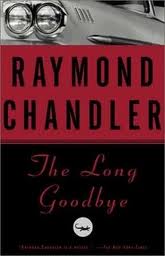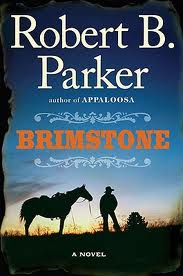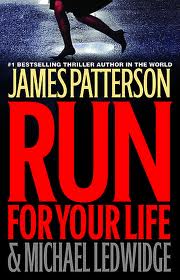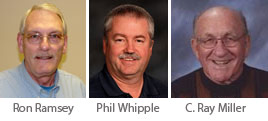This morning, from the comfort of home, I was reviewing my past week in the hospital, my bout with pancreatitis and having my gall bladder removed. Was there some higher purpose, or did it just happen? Where might I find the intervening hand of God?
I’ve never doubted God’s goodness.
I’ve never doubted that God is for real, that I’m his child, and that he loves me deeply.
I’ve never doubted that he sometimes injects himself into my life circumstances for my benefit.
And I’ve never doubted the promise, “All things work together for the good of those who love God” (Romans 8:28, KVJ). The NIV version gives the verse a slightly different meaning: “In all things, God works for the good of those who love him.” But though I read mostly from the NIV, I memorized that verse as a kid in the King James, so that’s usually how I think of it. Either way, it’s a good promise.
At the same time, I’m not one to find God’s hand in every change of the wind. Some people see God “working all things” no matter what they do–traveling, buying groceries, selecting a cable company– and are very quick to claim divine intervention. Not me. I believe we live in a fallen world where things happen for no other reason than, well, that’s just the way it happened. Hurricanes and tornadoes strike, car accidents happen, and people get pancreatitis. Sometimes bad people prosper, sometimes good people prosper, and that’s just the way it worked out. God had nothing to do with it.
And yet, I’ve never doubted that God does, indeed, inject himself into my world. Because I’m His Child, he pulls strings for my benefit. I’ve seen it way too much. If I tell you about it, it might sound like mere coincidence–as it would sound to me, if you told me the same story. I give much leeway for coincidence and circumstance in my life. But other times, I just know it goes beyond that.
This morning, as I reviewed the past week, God suddenly pointed out an area where, “Here’s something I did for you.”
I have Meniere’s Disease, which brings on vertigo, imbalance, occasional vomiting. But in April, I had an operation, a shunt placed behind my ear to relieve pressure. This procedure has a high success rate. By the end of May, I was experiencing practically no symptoms of Meniere’s. Not that it had gone away or been “cured.” It just minimized all affects. During the past month, I’ve felt as if Meniere’s had been vanquished from my life. That’s how effective the surgery was (though Meniere’s is tricky that way, and it’ll raise its ugly head down the road).
In the past, it didn’t take much to trigger Meniere’s. When I tried drinking that nasty stuff for a colonoscopy a while back, vertigo kicked in and laid me out for the next day; the procedure had to be cancelled (and I’ve never retried it). So I can only imagine what the trauma of the past week would have done.
And yet, throughout my stay in the hospital–the four-day IV-only diet, the meds, the inflammation, restarting my digestive system, everything else–I felt absolutely no symptoms of Meniere’s. No vertigo, no dizziness, no nausea. Nothing. Even when I drank some really nasty stuff prior to a test, Meniere’s stayed at bay.
That’s what God pointed out to me this morning.
“I knew this gall bladder problem was coming. Adding vertigo would have been a nightmare. So I got that out of the way.”
Back in January, when I was in Honduras, vertigo kicked in one morning and I slammed backward onto a hard tile floor, hitting my head terribly hard. I haven’t been able to find any reason God would let Meniere’s arise while I was out of the country on church work. But now, I view that as God getting my attention. I’d been putting off this surgery for a year, and would have kept putting it off. After hitting the floor in Honduras, I knew it was time to get the operation done.
In addition, I needed knee surgery to repair torn cartilage in my left knee. That was done in early May, and by mid-June, all the pain was gone and I was biking and walking again. I wouldn’t have liked facing both vertigo and knee pain, along with pancreatitis.
God knew all that. When pancreatitis hit, he intended to make it less-bad than it could have been. All things considered, my “best good” would have been to not experience any of this. But again, we live in a fallen world, and things break down, especially the body.
Now that I’ve explained it, you can easily dismiss it as a lot of coincidence and circumstance and reading of tea leaves. And I realize that, in the grand scheme of things, my ailments are puny. But I’ve lived way too long as God’s child not to recognize when he gets involved.
God knows the “all things” part of my life, including what lies ahead. Sometimes he works them together for my good. In this case, he worked them together for my less-bad. I appreciate it.
This is the first of the 18 “Burke” novels by Andrew Vachss. It was first published in 1980. Now, all 18 books are part of the Black Lizard imprint from Vintage Books.


 “The Long Goodbye” is among my favorite Raymond Chandler books. The 9-volume Philip Marlowe series begins in 1939 with “The Big Sleep,” and ends with 1958’s “Playback.” I’ve been reading the books in order, which means I have only “Playback” to go. Then I’m done, because Chandler died in 1959.
“The Long Goodbye” is among my favorite Raymond Chandler books. The 9-volume Philip Marlowe series begins in 1939 with “The Big Sleep,” and ends with 1958’s “Playback.” I’ve been reading the books in order, which means I have only “Playback” to go. Then I’m done, because Chandler died in 1959.
 Cole and Hitch, with Allie in tow, hire on as town marshal and deputy in the fast-growing town of Brimstone. In these westerns, there is no mystery to be unraveled, as in the modern-day Parker books. Rather, everything leads to a showdown. The players are identified early, and you realize they will inevitably clash with deadly consequences.
Cole and Hitch, with Allie in tow, hire on as town marshal and deputy in the fast-growing town of Brimstone. In these westerns, there is no mystery to be unraveled, as in the modern-day Parker books. Rather, everything leads to a showdown. The players are identified early, and you realize they will inevitably clash with deadly consequences.  “Run for Your Life” is the second installment in the Michael Bennett series, which James Patterson launched in 2007. Michael Ledwidge, one of the many writers under the James Patterson brand, wrote “Step on a Crack” in 2007, getting the series off to a thrilling start. But “Run for Your Life,” which arrived in paperback this spring, fell flat.
“Run for Your Life” is the second installment in the Michael Bennett series, which James Patterson launched in 2007. Michael Ledwidge, one of the many writers under the James Patterson brand, wrote “Step on a Crack” in 2007, getting the series off to a thrilling start. But “Run for Your Life,” which arrived in paperback this spring, fell flat.  “The Winter of Frankie Machine,” by Don Winslow, is the best novel I’ve read this year. Better than “The Girl Who Played with Fire.”
“The Winter of Frankie Machine,” by Don Winslow, is the best novel I’ve read this year. Better than “The Girl Who Played with Fire.”  Last week, on consecutive days, I received hospital visits from three United Brethren bishops, all of whom have been or currently are my boss. They’ve each racked up hundreds of hospital visits, maybe thousands, during their ministerial careers. I imagine it’s always a bit of a trick to “read” the patient and know how long to stay. These three visits were just right, but all different.
Last week, on consecutive days, I received hospital visits from three United Brethren bishops, all of whom have been or currently are my boss. They’ve each racked up hundreds of hospital visits, maybe thousands, during their ministerial careers. I imagine it’s always a bit of a trick to “read” the patient and know how long to stay. These three visits were just right, but all different.



